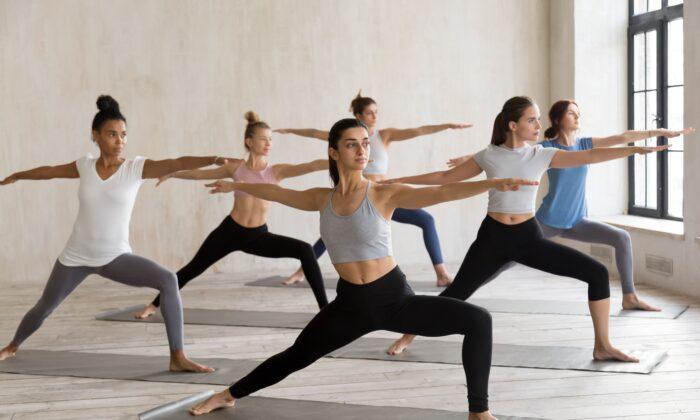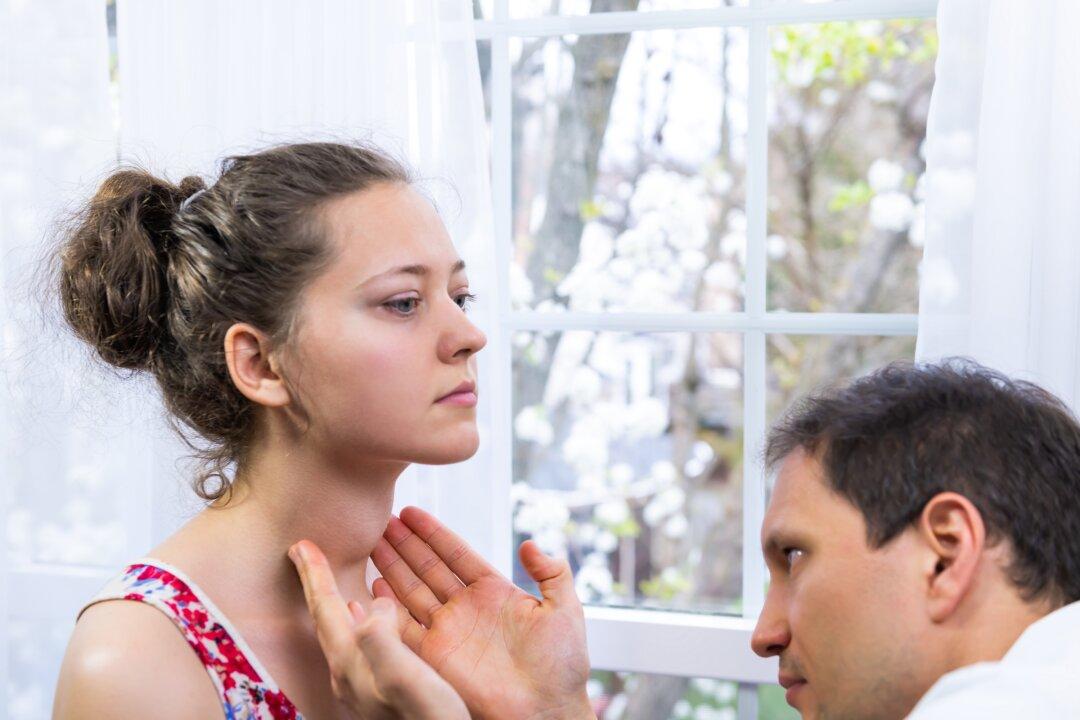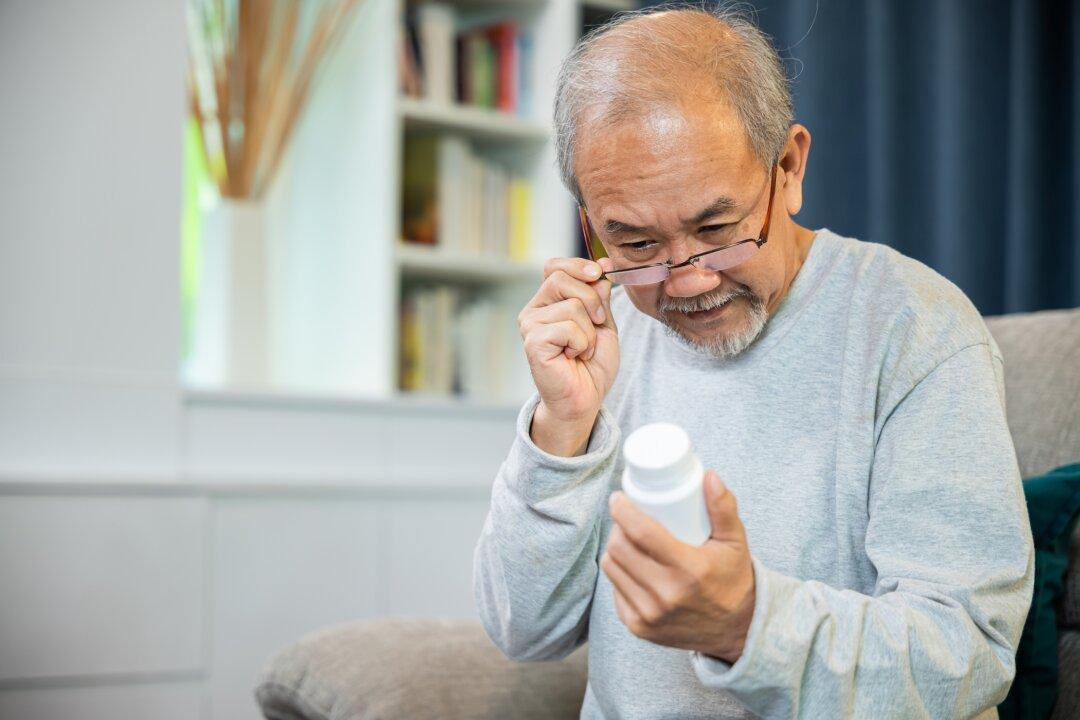Hot yoga is more than a sweaty fitness trend: It can help people with high blood pressure shift in a calm, healing direction.
A preliminary study confirms the benefits of hot yoga on symptoms of
high blood pressure. In a presentation at the American Heart Association’s Hypertension 2019 Scientific Sessions, findings were presented from the novel study exploring a drug-free method of treating elevated blood pressure and hypertension using heated yoga classes.
The lead researcher, Stacy Hunter, wrote an article about the study, titled "Temps up, blood pressures down in hot
yoga study," published in the American Heart Association Meeting Report (Presentation #P196; Session APS.1). Hunter is an assistant professor and lab director of the cardiovascular physiology lab at Texas State University in San Marcos, Texas.
For the
study, Hunter’s research team recruited 10 adult men and women who had been diagnosed with either elevated blood pressure (EVP) or stage 1 hypertension (S1H). According to the Mayo Clinic, EVP is a systolic pressure ranging from 120 to 129 mm Hg and a diastolic pressure below 80 mm Hg.
Systolic pressure is measured when blood is pumped into arteries by the heart. Diastolic pressure is the measure of resting blood pressure between heartbeats.
Stage 1 hypertension is a systolic pressure ranging from 130 to 139 mm Hg or a diastolic pressure ranging from 80 to 89 mm Hg. S1H elevates to stage 2 hypertension (S2H) when systolic pressure reaches 140 mm Hg or higher, or diastolic pressure rises to 90 mm Hg or higher. EVP tends to increase in severity over time unless steps are taken to bring blood pressure under control.
Participants in the study weren’t taking any blood pressure medications and had not engaged in any regular physical exercise for at least six months before the study. Researchers randomly assigned five participants to an experimental group for 12 weeks of hot yoga classes, while the control group did not take yoga classes.
Hot yoga is considered a vigorous workout, conducted in super-heated rooms that can reach 105 degrees Fahrenheit (40 Celsius) with 40 percent humidity. Sweating is induced as a form of general detoxification while high heat warms the muscles, enhancing flexibility.
Weekly Hot Yoga Lowers Blood Pressure in Three Months
The yoga group engaged in hour-long hot yoga classes three times each week for the three-month study period. Average blood pressures for the two groups were found before and after the study periods and compared. The researchers looked at average 24-hour blood pressure readings, as well as perceived stress and vascular function of participants in both groups.After 12 weeks, the results of the
study showed that members of the yoga group had lower blood pressure measurements than non-yoga group members. While researchers acknowledge that more studies on hot yoga are needed, these promising results add to the body of research on regular, room-temperature yoga’s benefits for lowering blood pressure.
Yoga Balances Your Body and Mind (Without Drugs)
Yoga has been practiced for many thousands of years as a way to
integrate the body with the mind. A first-of-its-kind
meta-analysis on the effects of yoga on blood pressure was published in 2013 in the peer-reviewed journal Evidence-Based Complementary and Alternative Medicine.
A U.S.-based, cross-functional research team led by Marshall Hagins from Long Island University in Brooklyn, New York, examined results from 17 independent studies on the effects of yoga on male and female adults with prehypertension or high blood pressure, with or without cardiovascular disease.
The featured studies assessed gentle yoga programs of relatively short duration, without focus on a particular style of yoga or individual fitness levels. This criterion, researchers hypothesized, would lead to findings within their research that would be applicable to the majority of individuals with elevated blood pressure.
Results of this meta-analysis showed that yoga practice was associated with an overall “modest but significant” reduction in blood pressure. Larger, more clinically significant reductions in blood pressure were observed when the yoga practice incorporated three key elements—postures, meditation, and breathing—as compared with more limited yoga interventions, which demonstrated less impact on blood pressure.
Yoga compared to no treatment yielded significant blood pressure benefits, but not when compared to other forms of exercise. Researchers said these findings “are of clear clinical significance and suggest that yoga may offer an effective intervention for reducing blood pressure among people with prehypertension or hypertension.”
They are not alone in their assertion that these study results indicate
yoga is a viable antihypertensive lifestyle therapy. They called for additional controlled trials to determine the optimal yoga program and treatment protocol.
Hot Yoga Goes Mainstream; Should You Go, Too?
For individuals interested in exploring hot yoga, Hunter recommends using extra precaution. Especially if you have a health condition that may be impacted, talk to your doctor before beginning any new
exercise regimen. If you’re cleared for practice, make sure you’re well-hydrated when you arrive to class; it’s not enough to merely sip water throughout the class.
Dress in layers that can be removed during class and allow you to cool down gradually once you leave. Start slowly; don’t over-exert during class, and be aware of signs of heat exhaustion. You don’t need to endure an hour of super-heated asanas to benefit from yoga. For some, it’s simply the
art of bending over.
Try a class at your local studio, YMCA, or YWCA, or check the class schedule wherever you work out. There are many levels of yoga, including classes suitable for beginners. To learn more, explore GreenMedInfo.com with nearly
300 scientific abstracts on yoga and its therapeutic benefits.
John Stuart Reid is an English acoustic-physics researcher and inventor of the CymaScope, an instrument that makes sound visible. He has studied the world of sound for over 40 years and is one of only two men to conduct an acoustics study of the Great Pyramid. He lectures at conferences in Europe and the USA. This article was republished from GreenMedinfo. Sign up for the newsletter. 





Friends Read Free